|
When there are no leaves on trees in Chilliwack, it can be a sign of several underlying issues. From sudden temperature changes to diseases like anthracnose, numerous factors could be at play. In this blog post, we delve into these concerns and provide actionable advice for homeowners. We'll explore how unseasonable winter weather impacts your tree's health and what you can do to protect them. We'll also shed light on the signs of anthracnose disease in trees and discuss effective treatment options. Further along, we take a look at late sprouting species such as Elm and Oak trees during their growing season. You'll learn about recognizing storm-related damages that may result in no leaves on trees, when emergency tree services might be necessary, and how drought stress affects springtime leaf production. Last but not least, we will examine the influence of salt dehydration from snow plows on tree health and overcrowding hindering leaf production. Throughout this post, our focus is providing you with valuable knowledge to maintain the health of your deciduous trees throughout all seasons. Winter Weather Wreaks Havoc on TreesWinter weather can be a real pain in the ash for trees. When temperatures fluctuate unexpectedly, it can cause confusion for trees like Maple and Ornamental varieties, leading to premature sprouting and delayed leaf growth come springtime. The Impact of Temperature Changes on Tree HealthTrees are sensitive beings that respond to environmental cues. When these cues become unpredictable due to unusual weather patterns like El Nino or La Nina, it can disrupt their natural processes, including leaf production. Protecting Your Trees from Unpredictable WeatherDon't let your trees suffer from the harsh weather. To safeguard them against erratic climate conditions, consider strategies like mulching for insulation or using tree wraps to protect against frost damage. Regular consultation with professional arborists, such as Chilliwack Tree Services, can also help maintain the health of your trees year-round. Anthracnose Tree Disease and Leaf GrowthDiseases like anthracnose can be a real buzzkill for your trees, especially Ash, Maple, and Sycamore. They cause early leaf loss, but don't worry, your tree can still make a comeback with a second flush later in the season. Identifying signs of anthracnose diseaseAnthracnose leaves a mark on your tree's foliage. Keep an eye out for small dead areas or blotches that are tan to black in color and have irregular shapes. Treatment options for affected treesIf you suspect anthracnose, don't wait. Call Chilliwack Tree Services for professional help. Our certified arborists can provide effective treatment options like pruning infected branches or applying appropriate fungicides. Late Sprouting Elm and Oak TreesElm and Oak trees are fashionably late to the leaf party, not producing leaves until late spring or early summer. But don't worry, they're just following their natural growth cycle. Understanding the Natural Cycle of Elms and OaksIt's important to know that the delay in leaf production is a normal part of their growth process. Don't misconstrue the late leafing as an indication of illness or harm. Care Tips During Late Sprouting PhaseKeep your trees healthy by watering them regularly, applying mulch around the base, and scheduling regular check-ups with your local tree service provider like Chilliwack Tree Services. Trust us, your trees will thank you. For more information on Elm and Oak trees, check out arborday.org. Storms & Winds Can Stunt Leaf GrowthWhen Mother Nature gets angry, your trees can suffer. High winds and storms can damage trees so badly that they can't produce leaves in the spring. Even lightning strikes can zap your tree's ability to grow leaves. Spotting Storm Damage on Your TreeLeaning trunks, broken branches, and exposed roots are all signs that your tree has taken a beating from a storm. Don't wait to call in the pros at Chilliwack Tree Services to assess the damage and provide necessary treatments. Emergency Tree Services: When to CallIf your tree is a danger to your property or safety, don't hesitate to call for emergency tree services. The experts will quickly assess the situation and take action to keep you and your property safe. Drought's Impact on Spring Leaf GrowthWhen drought strikes, trees struggle to produce leaves in the spring. This becomes evident when they fail to sprout foliage after enduring harsh summer conditions. Signs of Drought Stress in TreesWilting or yellowing leaves, early leaf drop, and slow growth rates are all signs of drought stress. Promptly address this with proper watering and mulching techniques. Consult with professional arborists, like those at Chilliwack Tree Services, for effective management strategies. Salt & Snowplows' Impact on Tree HealthWinter snow removal is crucial, but it can harm your trees. Snow Plows and salt can cause physical damage and dehydration, leading to leafless trees in spring. Protect your trees by using alternative de-icing methods or barriers between the road and your trees. Regular watering during dry periods can also help. When in doubt, consult a reputable tree service provider like Chilliwack Tree Services. Combatting Salt DehydrationDon't let salt dehydrate your trees. Try alternative de-icing methods or barriers between the road and your trees. Regular watering during dry periods can also help. Remember, professional advice is always beneficial when dealing with tree health issues. Tree Leaf Production Hindered by OvercrowdingSpacing is crucial for proper tree care. Overcrowded trees suffer from reduced leaf production due to limited resources and light exposure. This issue often arises when landscapers fail to provide adequate space between mature plants. Consult with an Arborist for Trimming or RemovalTo prevent overcrowding, it's best to consult with a professional arborist. They can advise on the best course of action, whether that's strategic pruning or complete removal of certain trees. Remember: proper planning and maintenance are crucial for your trees' health and longevity. Seek an Arborist If Help Is NeededLeafless trees? Don't panic, it's not always a death sentence.
Don't DIY it, consult with a professional arborist like Chilliwack Tree Services to diagnose and treat the issue. Remember, there's hope for your leafless trees! FAQs in Relation to No Leaves on TreesWhat does it mean if a tree has no leaves?If a tree has no leaves, it could be due to several factors such as disease, pests, environmental stressors like drought and frost damage, or poor health. What causes a tree not to produce leaves?A tree may not produce leaves due to factors such as insufficient sunlight, root damage, or improper pruning. What is the term for trees that don't lose their leaves?Trees that don't lose their leaves are called evergreen trees. Why is it important for trees to lose their leaves?Trees lose their leaves to conserve water during dry periods and to prepare for new growth in the spring. When it comes to tree care, it's important to consider personal experiences or anecdotes from other tree service companies to ensure you're getting the best service possible. Don't be afraid to ask about pricing for services, as it can vary greatly between companies and locations. For more information on tree care and maintenance, check out credible sources like the Arbor Day Foundation or the International Society of Arboriculture. As an experienced professional in tree care in Chilliwack, I can assure you that having the best tools for trimming trees is crucial to achieving the cleanest cuts. The right equipment makes your work easier and ensures the longevity of your trees. This blog post will delve into different types of pruning saws and tools suitable for various tasks - from pole pruners ideal for high-reach trimming to hand saws offering versatility in cutting branches 5 inches or less. We'll explore how chainsaws provide the power needed to cut slightly larger branches and why wearing protective gear is essential during trimming operations. Additionally, we'll touch on proper tool maintenance practices to keep these valuable instruments operating smoothly. Understanding the various pruning tools, whether you're using hand saws, hand shears, hedge shears, pole saws, or rope saws, and when can ensure you the healthiest cuts and optimally using your tree-trimming endeavors with suitable instruments. Pole Pruners: The Solution to High Reach TrimmingTrimming branches high above your head can be a real pain in the neck. That's where pole pruners come in - pruning saws cut branches up to 30 feet high. Plus, they come with pruning blades and a string to operate them, making trimming a breeze. Trim Safely with Pole PrunersBe mindful when pruning trees - don't take risks. Always prioritize safety by keeping a firm grip on the handle, avoiding standing directly under the branch being cut, and staying away from power lines. Safety first, folks. Telescoping Pole Pruners: The Ultimate FlexibilityTelescoping pole pruners are the way to go to trim trees easily. You can reach those hard-to-get branches with their adjustable lengths without breaking a sweat. Convert Your Pole Pruner into a SawConsider attaching a saw blade to your pole pruner for those thicker branches. This will make quick work of those demanding tree-trimming tasks. It's like giving your pole pruner a power-up. Hand Saws: The Versatile Tool for Tree TrimmingTrimming branches up to five inches thick? Hand saws are your go-to tool. They come in various price ranges and can cut branches on push, pull, or both strokes. Pro tip: pull-stroke hand saws are safer when used from a ladder or within tree branches. Push Stroke vs. Pull Stroke Hand SawsChoosing between push and pull stroke hand saws depends on your needs and comfort level. While both have advantages, pull-stroke hand saws provide more control during cutting operations. Hand Saw Safety Tips
Chainsaw Power for Thick BranchesWhen branches get thick, chainsaws do the trick. Gas-powered and efficient, they slice through even the beefiest limbs. Check out chainsaws with cutting bars ranging from six to twenty inches long - just add two more inches than your thickest branch size. Deciding Between Gas and Electric ChainsawsElectric chainsaws are quieter and less shaky, but gas-powered ones pack a bigger punch. Choose wisely based on your needs. Proper Chainsaw Use for SafetyProtect yourself with gloves and safety glasses while using a chainsaw. Keep your footing, and don't overreach. Safety first, folks. Protect Yourself While Tree TrimmingPrioritize safety above all else when cutting down trees, regardless of your tool. Here are some tips to keep you safe while trimming trees: Closed-Toe Shoes Are A MustDon't let your toes become a casualty of your tree-trimming operation. Wear closed-toe shoes to protect your feet from falling branches and sharp tools. Check out Home Depot for some sturdy options. Protect Your Ears TooChainsaws can be as loud as a rock concert, so wear ear protection. Foam earplugs or headphones can help prevent hearing damage. Check out the CDC website for more information on hearing loss prevention. Remember, taking these safety precautions keeps you safe and helps you get the job done more efficiently. So gear up and get trimming. Tool Maintenance: Keep Your Garden Tools in Top ShapeSharp pruning tools do light work. Dull tools? Not so much. Keep your garden tools in tip-top shape with these maintenance tips. Why Sharpness MattersA sharp tool is a safe tool. Dull pruning saws can slip and cause accidents. Plus, they make pruning and trimming a real pain in the grass. Keep your devices sharp with this guide. Proper Storage TechniquesDon't let your tools rust away. Once done, keep your devices dry to keep them from deteriorating. When In Need of a Tree Trimming CompanyProtect yourself with closed-toe shoes and ear protection when trimming trees at home, and keep your tools sharp for cutting branches and longevity. Choose the best tools for trimming trees based on branch height and wood thickness - pole pruners or hand saws for homeowners and electric or gas-powered chainsaws for thicker branches. Better yet, leave it to the professionals and call Chilliwack Tree Services for a safer and cleaner cut. FAQs in Relation to Best Tools for Trimming TreesWhat are the Best Tools for Trimming?When trimming trees, you want to ensure you have the right tools for the job.
Remember to protect yourself with gloves and safety glasses. What are the Best Tools for Cutting Hard-to-Reach Branches?A telescoping pole pruner is your best bet when it comes to pruning shrubs with hard-to-reach branches. For more information on trimming, check out Arbor Day Foundation's guide to pruning. Tree leafing problems can be a cause for concern among homeowners who need tree service, as they often indicate underlying issues that may threaten the health and longevity of your trees. Various things may lead to tree leafing issues, from environmental stressors to disease outbreaks. This blog post will delve into several common causes behind tree leafing issues and guide how to address them effectively. Unseasonable Winter WeatherUnusually warm temperatures during winter, followed by extreme frost, can hinder the growth of leaves on Maple and Ornamental trees in spring. This sudden temperature change confuses the tree's natural cycle, leading to a delay or complete failure in leaf production. Effects of Fluctuating Winter Temperatures on Tree HealthTrees rely on consistent seasonal cues to properly transition between stages of dormancy and growth. When these cues are disrupted by unseasonable warmth followed by harsh cold snaps, it can cause stress and damage to their buds, making them unable to produce new tree leaves. Preventative Measures for Protecting Trees from Unexpected Weather Changes
Tree Diseases Affecting Leaf GrowthCertain diseases can cause Elm and Oak trees to not sprout leaves until all cold weather has disappeared. These diseases weaken the tree's overall health, making it more susceptible to damage during harsh winters and affecting its ability to produce leaves come springtime. Common Tree Diseases Impacting Leaf Growth
Identifying Symptoms of Diseased TreesCheck for indicators such as wilted or discolored foliage, premature leaf fall, dead twigs, and odd developments like cankers or swellings if you think your tree is sick. If you think your tree is diseased, it's best to seek advice from an experienced arborist for accurate diagnosis and treatment options. Treatment Options for Affected TreesTreating a diseased tree depends on the specific ailment. Some common treatments include pruning affected branches, applying fungicides or insecticides when necessary, and improving soil conditions around the tree roots by adding organic matter or mulch layers. In extreme sickness cases, removing the tree may be necessary to impede further contagion. Storm Damage and Lightning StrikesTrees damaged by storms, high winds, or lightning strikes may struggle with producing leaves during spring. The physical trauma inflicted upon these trees weakens their structure and hinders their ability to grow foliage properly. Signs Your Tree Has Sustained Storm Damage or Lightning Strikes
Steps for Assessing Potential Harm Caused by Severe Weather Events:
Repairing Damaged Branches Through Proper Pruning Techniques:Removing broken branches using proper pruning methods is essential to ensure healthy growth after storm damage. This can help prevent further decay and promote new leaf production. Learn more about effective pruning techniques in this informative guide on tree pruning practices. Droughts Impacting Tree HealthLiving in an area prone to droughts can significantly impact your tree's ability to produce new leaves during spring. A lack of water resources affects not only the overall health of your tree but also its capacity for healthy growth. Furthermore, salt used during snow removal efforts can damage your tree's root system, further hindering its development. How Drought Conditions Affect a Tree's VitalityDrought conditions cause trees to undergo dehydration stress, leading them to conserve water by shedding leaves or halting leaf production altogether. This is especially true for non-drought-tolerant species. Recognizing Signs of Dehydration Stress Within Your Plants
Proper Watering Practices Ensuring Optimal Hydration LevelsTo guarantee your trees stay hydrated during drought, it is essential to utilize proper watering strategies such as deep-water irrigation and mulching near the base. Learn more about effective watering practices from this comprehensive tree care and maintenance guide. Tree leafing problems can also be caused by other factors such as pests, diseases, and nutrient deficiencies. Fruit trees, for example, require specific nutrients to produce healthy leaves and fruit. Overcrowding Stunting Growth PotentialOvercrowded environments may prevent certain types of vegetation from growing leaves during spring. When trees are planted too close together, they compete for essential resources like sunlight and water, stunting their growth. Therefore, tackling overcrowding in your landscape is imperative if you want your trees to flourish. Identifying Overcrowding Issues Within Your LandscapeTo determine if overcrowding is the cause of your tree leafing problems, inspect the area around the tree. Look for signs like branches overlapping or touching each other, roots intertwining with neighboring trees, or a lack of sunlight reaching lower branches due to dense foliage above. Consulting an Arborist About Tree Trimming or Removal SolutionsIf you suspect that overcrowding affects your tree's ability to produce leaves in springtime, consider consulting a professional arborist at Chilliwack Tree Services. They can provide expert advice on tree trimming techniques and spacing requirements for different species of fruit trees and even suggest potential removal solutions if necessary. Proper Spacing Techniques Promoting Healthy Plant Development
Pope Tree Service AssistanceIf you're experiencing difficulties with your tree leafing out in the spring, consider seeking professional help from Chilliwack Tree Services. Our team of experts will assess the situation and provide appropriate solutions to ensure your tree thrives again. Services offered by Chilliwack Tree Service
Benefits of working with a professional arboristA qualified arborist can diagnose issues affecting your tree's ability to produce leaves, such as diseases or environmental factors. They have extensive knowledge of proper pruning techniques, watering practices, and other essential aspects of tree care. Working with an expert ensures that any interventions are done correctly without causing further harm to the tree. ConclusionTree leafing problems can arise from various factors, including unseasonable weather, diseases, storm damage, droughts, and overcrowding. Identifying the root cause of these issues is crucial in ensuring proper treatment and maintenance for your trees. Don't let tree leafing problems go untreated - contact Chilliwack Tree Services today to schedule a consultation! Tree root control is essential to maintaining the health and stability of trees in your landscape. As a homeowner, it's crucial to understand how tree roots function and the best practices for managing them effectively. This comprehensive guide will explore various aspects of tree root control, root systems, and management. Assessing Tree Roots and StabilityMBefore attempting to remove visible tree roots, it's crucial to consider the age of the tree and its stability. Removing large roots can destabilize a healthy tree, causing potential hazards in your lawn or property. Learn how to assess which roots are safe to remove without compromising the health and safety of your trees. Identifying Essential Root Systems for Tree StabilityAn essential part of assessing root systems is understanding their role in providing stability. Larger, structural roots anchor the tree firmly into the ground, while smaller feeder roots absorb water and nutrients from the soil. Therefore, removing significant structural roots may cause instability issues. Signs That a Tree May Become Unstable After Root Removal
Using Rock Salt as an Effective SolutionUsing rock salt is one effective method for stopping unwanted tree roots from sprouting in your lawn. How Rock Salt Inhibits Root GrowthSodium chloride, more commonly known as rock salt, dehydrates plant cells, inhibiting the development of new roots and killing off existing ones. When applied around the base of a tree, it absorbs moisture from the soil and surrounding tree root systems. As a result, this prevents new roots from developing and eventually kills off existing ones. Proper Application Methods for Using Rock Salt Around Trees
Trimming Lawn Around Exposed Tree RootsMaintaining a neat appearance in your lawn despite exposed roots can be achieved by trimming around them with a cordless weed eater. Selecting Appropriate Tools Like Cordless Weed EatersA cordless weed eater is an excellent choice as it offers maneuverability and convenience when working around root systems. Lightweight and simple to operate, cordless weed eaters provide the convenience of no cords or fuel required for maneuverability in areas with exposed roots. Techniques for Precise Trimming Around Exposed Roots
Cutting Tree Roots - Pros and ConsAdvantages of Cutting Problem-Causing Roots
Potential Risks Involved When Removing Significant Portions of a Tree's Root System
Herbicides - Environmental Risks & AlternativesWhile herbicides offer another way to control invasive root systems from spreading across your lawn, they pose significant risks to the environment. The chemicals used in these products can contaminate soil and water sources, affecting plants, wildlife, and human health. Moreover, some herbicides, such as glyphosate, have been implicated in causing cancer. Environmental concerns associated with herbicide use
Eco-friendly options for tree root controlOne eco-friendly alternative is applying rock salt around trees' bases (as discussed earlier), which inhibits root growth without causing environmental damage. Another approach involves the manual removal of problematic roots by cutting them back; however, this should be done cautiously under professional guidance to not destabilize the tree itself. Relying on Tree ProfessionalsTo ensure that your efforts in stopping tree roots from sprouting in your lawn are both effective and environmentally friendly, it's best to rely on professional help. Hiring a professional arborist or tree service provider has several benefits, including expert guidance and assistance. Benefits of Hiring a Professional Arborist or Tree Service Provider
How Professionals Assess Trees' Health Before Implementing SolutionsA thorough assessment of a tree's health is crucial before implementing any solution. This includes examining its age, stability, and signs of disease or decay and evaluating the impact of proposed treatments on surrounding plants and ecosystems. Tree root control can be complex and difficult to implement without the proper knowledge and tools. That's why it's essential to trust the experts at Chilliwack Tree Services to handle your tree root control needs. Our team of professionals has years of experience dealing with invasive root systems and can provide effective solutions that won't harm your trees or the environment. Whether you're dealing with a single tree or an entire yard, our team can help. We offer various tree root control services, including root pruning, root barriers, and tree removal, to help you manage your tree root systems. ConclusionIn conclusion, tree root control is essential for maintaining the health and stability of trees while ensuring safety in residential areas. Proper assessment, use of rock salt, trimming around exposed roots, cutting problematic branches, and eco-friendly herbicides are effective solutions for invasive tree root control. However, it's crucial to hire a professional arborist or tree service provider to assess the health of trees before implementing any solution. If you need help with tree root control in Chilliwack or surrounding areas, contact Chilliwack Tree Services today for expert advice and quality services! Keeping trees small is an important part of any landscape maintenance plan. Pruning and planting are two key steps to keeping a tree healthy and in its desired size, but it takes ongoing effort to maintain the desired shape and size over time. With proper pruning techniques, you can keep your trees looking great while ensuring they stay within their designated space. Planting smaller varieties of trees will also help assure that they remain manageable as they grow older. Discover the secrets to compacting your trees with our all-inclusive guide on pruning, planting, and managing small trees. Pruning TreesPruning trees is necessary to keep them healthy and to look their best. Knowing when and how to prune your trees will help you get the most out of your efforts. Pruning timing depends on the kind of tree being cut back. Deciduous trees should be pruned in late winter or early spring. Conifers in late summer or early fall, and dead branches can be removed anytime during the growing season. Dead branches can be removed anytime during the growing season if needed. Using sharp tools such as loppers or saws, make clean cuts when pruning a tree to avoid tearing away at bark and creating an entry point for diseases. Sterilize all tools between each cut with rubbing alcohol or bleach solution. Additionally, practice proper techniques such as angling cuts away from buds. In short, take care not to over-prune; cutting corners can cause damage that leads to disease or insect infestations. Regularly pruning trees helps keep them healthy and in the desired shape. Moving on, planting new trees can also be beneficial to create a lush landscape. Planting TreesPlanting trees can be a great way to add beauty and value to your property. Selecting the right tree for your space, correctly planting it, and caring for it are all necessary to maximize your tree-planting experience. When selecting a tree for your landscape, consider its size, shape, and environmental needs, such as soil type and moisture requirements. Head to a nursery nearby in Chilliwack, like at the Greendale Farm and Nursey or Clayburn Nursey, to view the trees available. Research different species online or consult an expert at a local garden center who can help you decide which type of tree will work best for your property. Once you have chosen the right tree for your landscape, it's time to plant. Start digging a hole two to three times as wide as the root ball but no deeper than the root ball on the tree. Make sure plenty of organic material is mixed into backfill soil before filling up the hole around roots so they don't dry out too quickly after planting. When finished planting, give each new tree one inch of water per week during hot summer months until established (about two years). Mulching also helps retain moisture around young plants while suppressing weeds from competing with them for resources like water and nutrients from the soil. Proper planting tips and techniques will help your newly planted tree thrive. To keep small trees healthy, understand their water and fertilizer needs. Maintaining Small TreesWatering and fertilizing requirements, proper mulching techniques, and pest control strategies are necessary for optimal growth. Watering and Fertilizing Requirements:Regularly watering your small tree is beneficial for its health. The amount of water needed depends on the size of the tree, soil type, weather conditions, and time of year. Providing more water than usual might be required in dryness or intense heat. Applying fertilizer annually in early spring can help foster growth during the season. Use an appropriate fertilizer that meets your tree's needs based on species and age. Proper Mulching Techniques:Proper mulching can help conserve moisture around small trees while providing nutrients as it breaks down over time. When applying mulch, try not to pile it too high against the trunk as this can cause rot or disease issues; instead, spread a 2-3 inch layer out evenly around the base of your tree, taking care not to smother any existing vegetation beneath it such as grasses or weeds. ConclusionPruning, planting, and maintaining small trees are steps to keep the tree small. Regularly prune your existing plants for optimal growth and health. Plant new shrubs or saplings that will remain smaller in size when mature. Lastly, maintain a regular fertilization and watering schedule for the best possible results for keeping your tree small over time. Let us help you maintain the size of your trees and ensure their long-term health. Contact Chilliwack Tree Services today to learn more about our tree services in Chilliwack and how we can assist in keeping your trees small. Will my trees fall? It is a question that many homeowners ask when they have large, mature trees on their property. Regrettably, yes; even if the tree is in perfect condition and maintained adequately, external forces or other unpredictable conditions can still lead to it toppling over. But there are certain signs you should watch for as a homeowner so that you can take preventive measures before it's too late. If a tree falls unexpectedly, having tree service experts help should be sought to remove it and safely avoid further damage Here are the causes of why trees fall and how one can prevent them from doing so while also exploring what options exist when dealing with fallen trees after they occur. Causes of Tree Falling DownTrees can topple for various reasons, including natural triggers, human-induced issues, sickness or pest invasions. Winds, rain, or snow of great intensity may make trees tumble, and Human-related causes may include improper pruning techniques, poor planting practices, and inadequate staking. Disease and insect infestation can weaken the tree's structure over time, making it more susceptible to falling during severe weather events. The wind is a frequent factor in trees falling due to natural causes, potentially uprooting shallowly planted ones or breaking off large branches from mature trees weakened by disease or pests. Heavy rains, which we sometimes get in Chilliwack, BC, can also be problematic in areas with soil erosion issues. Rain can cause root systems to lose their grip on the ground and eventually topple over in extreme cases. Snowfall can accumulate on branches causing them to snap under their weight when combined with wind gusts. Incorrectly planted trees, inadequate staking techniques, and improper pruning practices can leave a tree vulnerable to falling during extreme weather conditions. As such, these human-related activities often serve as the primary culprit for fallen trees due to the extra strain they place on a root system which can cause it to give way in high winds or heavy rains resulting in property damage and potential injury risks if someone is nearby at the time of occurrence. To avoid this scenario, one must ensure proper planting methods are utilized with adequate support for more giant trees. Appropriate staking techniques and professional pruning services are sought out so that weak spots aren't created where branches could easily snap off under pressure. Many factors contribute to why some trees end up toppling over. However, with proper maintenance practices such as regular inspections and timely treatments along with correct planting and staking procedures, you should be able to minimize the chances of experiencing costly damages associated with unexpected occurrences caused by Mother Nature herself. Signs of a Tree That May Fall DownTrees are abundant throughout Chilliwack, yet they can be hazardous if improperly handled. Knowing the signs of a tree that may fall is important for homeowners to protect their property and family from harm. Leaning Trees:A leaning tree can indicate an unstable root system or other underlying issues. Suppose you notice your trees leaning more than usual. In that case, it's necessary to immediately contact a tree services professional to assess the situation and determine whether it needs to be removed or stabilized with staking or cabling. Dead or Dying Branches:Dead branches are easy to spot as they lack leaves, while dying branches have fewer leaves than normal and may appear discolored. It's best to remove dead and dying branches as soon as possible before they become weak enough to break off in high winds or heavy rainstorms. Cracks in the Trunk or Roots:Cracks in the trunk can weaken its structure significantly, making it more likely to topple during bad weather conditions like storms and strong winds. Similarly, large cracks in roots could mean that the tree isn't getting enough water from its surroundings anymore, which could cause instability too. In both cases, an arborist should be consulted immediately so that appropriate action can be taken accordingly, such as pruning back some limbs for better balance or even removing the entire tree if necessary. Consistent upkeep and surveillance are beneficial to assure your trees' lasting well-being. Professional Assistance for Fallen TreesRegarding tree expert assistance for fallen trees, homeowners should consider a few key services. Tree removal service is necessary for safely removing the tree from your property without causing additional damage. Tree services companies can also safely remove a tree that is cut down. Stump grinding is another important service, as this will help prevent new growth and further damage to your lawn or garden beds. Emergency tree services may be necessary in cases where the tree has caused significant structural damage and needs immediate attention. Tree removal services involve cutting down and removing the entire tree from your property. The duration of the removal process varies depending on the size of the tree and total number of trees, ranging from a few hours to multiple days. Professional tree removal companies use specialized tools such as chainsaws and cranes to safely remove trees while minimizing any potential hazards or risks associated with them being left behind in unsafe conditions. Tree experts must possess considerable knowledge in handling substantial trees to ensure safe removal without potential harm or destruction. An experienced tree services company that understands safe handling practices must be hired. ConclusionTrees can fall due to a variety of reasons and homeowners need to be aware of the signs that indicate a tree may fall. By taking proactive steps such as regularly inspecting your trees and seeking professional assistance, you can help prevent any potential damage from trees falling. Furthermore, if a tree comes down on your property, it is wise to enlist the services of experts who can safely remove it.Take preventative action to protect your property and loved ones from falling trees. Hire a certified arborist like the team from Chilliwack Tree Services with the expertise and experience needed to assess, diagnose, treat, and maintain the health of your trees. Tree removal in Chilliwack can be daunting, requiring precision, safety precautions and knowledge of safe practices to ensure the job is done right. At Chilliwack Tree Services, we understand how important it is for homeowners to have their trees removed safely and efficiently. Learn about the tree removal process in Chilliwack, including safety considerations, cost estimates and aftercare tips that will help keep your property safe from future damage caused by falling trees or limbs. So you can just read on if you need more information about tree removal in Chilliwack. Tree Removal ProcessTree removal is a complex process that requires careful planning and execution. It is important to assess the situation before attempting any tree removal, as potential hazards or safety considerations may need to be considered. Assessing the SituationWhen assessing a tree for removal, it is important to consider factors such as size, location, the health of the tree, and any nearby structures or power lines. The condition of the soil should also be assessed to determine how difficult it will be to remove the tree safely. Additionally, if there are any signs of decay or disease present on the tree, then these should also be noted before proceeding with removal. Planning the RemovalOnce all necessary assessments have been made, it is time to plan how best to remove the tree safely and efficiently. This includes deciding which tools and equipment will need to be used for cutting down branches and removing stumps from roots; what type of protective gear should be worn by those involved in carrying out work; whether additional personnel will need to be involved; and where debris can go once removed from the site. Executing The RemovalThe tree removal process is complex and requires careful planning and execution. Safety considerations are essential for a successful outcome, so taking precautions before beginning any tree removal project in Chilliwack is necessary. Safety Considerations for Tree RemovalRegarding tree removal, safety should always be the top priority. It is important to identify potential hazards before beginning any work on a tree. This includes looking for dead or damaged branches that could fall unexpectedly and assessing the tree's stability. Additionally, it is important to check for power lines nearby and ensure they are not in danger of being affected by the work. Protective gear and equipment are essential when removing trees as well. This includes wearing hard hats, eye protection, gloves, long pants and sleeves, closed-toe shoes with non-slip soles, and other protective clothing items as needed. Chainsaws should also be used with caution; proper maintenance must be considered before use, including checking chain tension and fuel levels regularly throughout use. In addition to chainsaws, ladders may also need to be used depending on how tall the tree is; these should only be operated by trained professionals who understand how to handle them safely at all times. Cost of Tree Removal in ChilliwackThe cost of tree removal in Chilliwack can vary depending on several factors. Size and type of tree, location, and complexity of the job are all important considerations when estimating the cost. Generally speaking, larger trees will require more time and effort to remove than smaller ones, so they tend to be more expensive. The same is true for certain trees with deeper root systems or other features that make them harder to remove. The location also plays a vital role in determining the cost; if a tree is located near power lines or other structures, it may require special equipment or additional labor, which could increase the price significantly. Tree removal in Chilliwack can be costly, but with the right tips, you can ensure you get the best value for your money. Now let's look at what to do after tree removal in Chilliwack. Aftercare for Trees After Removal in ChilliwackCleanup and Disposal of Debris:After removing a tree from your property, it is important to properly dispose of the debris. Depending on the size of the tree, this can be done by hand or with a machine such as a chipper. If you are disposing of the debris, check local regulations for proper disposal methods. If you hire professionals for removal services, they will typically take care of all cleanup and disposal needs. Stump Grinding and Removal Options:Stumps can be an eyesore in any yard and should be removed after a tree has been taken down. Several options are available for stump grinding or removal, including chemical treatments that break down stumps over time or mechanical grinding, which grinds them into mulch-like material that can be used in landscaping projects. Professionals usually offer both services, so ask what option would work best for your situation before hiring someone for stump removal services. Once all debris has been cleared, planting new trees is an excellent way to restore beauty and life to your landscape after having one removed from your property. When selecting new trees, it is important to research their growth habits, so you know how large they will become once mature and if they require special care such as pruning or fertilizing throughout their lifespan. Additionally, make sure to plant at least 10 feet away from structures like homes or sheds in order to avoid damage caused by roots growing too close together over time. ConclusionTree removal in Chilliwack is a complex process that requires safety considerations, cost analysis and aftercare for the trees. It's important to ensure you have the right professionals handling your tree removal needs, as it can be dangerous if not done correctly. By understanding the process, safety considerations, costs and aftercare involved with tree removal in Chilliwack, homeowners can make an informed decision when considering their options. Tree removal can be daunting, especially if you don't have the right tools or know-how. Don't let tree removal in Chilliwack become an issue for your home or business - enlist the help of experienced professionals from Chilliwack Tree Services! We provide prompt and reliable services that ensure safe and efficient tree removal with minimal disruption to your property. Our team has over 20 years of experience removing trees of all shapes and sizes while keeping safety our top priority. Contact us today to get started on reclaiming valuable space at your residence or commercial site! FAQs About Tree Removal in ChilliwackHow much does an arborist cost in BC?The cost of an arborist in British Columbia varies depending on the type and complexity of the job. Generally, a basic tree trimming or pruning service can range from $150 to $400 per hour. More complex services such as stump grinding, removal of large trees, or cabling and bracing may cost up to $1,000 per hour. It is important to note that additional costs may be incurred for travel time and disposal fees. To get an accurate estimate for your specific project, it is best to contact a local arborist for more information. Why do arborists charge so much?Arborists charge a premium for their services because of their specialized knowledge and expertise. They understand the unique needs of trees, from proper pruning techniques to diagnosing diseases or pests that may be affecting them. Additionally, arborists must use specialized tools and equipment to safely and effectively provide tree care services. This can add up quickly when factoring in labor costs, insurance premiums, and other overhead expenses associated with running a business. Hiring an experienced arborist is worth the price as it ensures your trees are properly cared for while protecting your property from potential damage caused by improper tree care practices. How do professionals remove a tree?Tree removal is a complex process that requires the expertise of a professional. First, the tree service provider will assess the size and condition of the tree to determine what type of equipment is needed for safe removal. They may need to use chainsaws, chippers, or cranes, depending on the size and location of the tree. The professionals will cut down any large branches before removing them from your property. Finally, they will grind up any remaining stumps and haul away all debris so you can enjoy your newly cleared space. As the Chilliwack community grows, the number of trees that will be removed is bound to increase to make room for more land development. As such, being familiar with the tree removal process will be helpful for homeowners when deciding on moving forth with removing trees. Tree removal can be complex and dangerous, so having a tree services company with a proven track record of handling tree removals in Chilliwack is important. We'll go over the general steps involved in the tree removal process. 1. AssessmentThe first step in the tree removal process is for a professional tree service company to assess the tree. They will evaluate the tree's condition, location, and potential hazards. They will also consider the surrounding structures and power lines that pose a risk with tree removal. 2. PlanningOnce the tree has been assessed, the tree removal company will plan the removal process. They will develop a plan to safely and efficiently remove the tree. 3. RemovalThe actual removal of the tree will be done by a team of trained professionals. They will use a combination of techniques, such as cutting, sawing and rigging, to remove the branches and trunks. Depending on the size and the total number of trees 4. CleanupAfter removing the tree, the tree services company will clean up the debris. They will remove all branches, leaves, and any remaining outstanding mess. They will also make sure that the area is safe and secure. 5. DisposalThe tree service company will also dispose of the removed tree. They will either recycle the wood or dispose of it appropriately. 6. Stump RemovalThe stump will still be present after removing the tree. If you want the stump removed, it can be ground down or removed altogether. Stump removal is a separate process and may require additional equipment and time. 7. Safety MeasuresDuring the process, the tree services company will take necessary safety measures to protect the property and ensure no bystanders are harmed. They will use safety equipment such as helmets, goggles, hard hats, and harnesses. They will also cordon off the area to ensure no one is in danger during removal 8. CommunicationThe tree service company will keep you informed about the progress of the removal process and will address any concerns you may have. They will also provide a detailed report of the work done and recommendations for future tree care. It's essential to keep in mind that tree removal is not always the only solution. In some cases, pruning or trimming may be a more appropriate alternative. A professional tree services company in Chilliwack will be able to provide you with an evaluation and recommend the best course of action. In conclusion, tree removal can be a complex process and should only be done by tree experts with the expertise and experience while possessing all of the essential equipment. By working with a reputable tree services company like Chilliwack Tree Services, you can be sure that tree removal is done safely and efficiently. We take care of everything, from assessment, planning, removal, cleanup, and disposal. Chilliwack Tree Services is fully licensed and insured with a good reputation. Call us today for a free quote! Choosing the right tree services company for your tree removal in Chilliwack is crucial for ensuring that your trees are removed safely and efficiently while avoiding any damage to nearby properties. With so many tree service companies available, knowing which one to choose can be challenging. We cover some factors when selecting a tree service company. 1. License and InsuranceWhen choosing a tree service, the first thing to check is whether they are fully licensed and insured. This is important because it ensures that the company operates legally and that you are protected in case of any accidents or damage during the tree removal process. Chilliwack Tree Services is fully licensed and insured in this regard. 2. ExperienceYou want to choose a tree service with plenty of experience. The more experience a company has, the more likely it will have the knowledge, skills, and equipment to handle any tree removal job, big or small. Chilliwack Tree Services has over 20 years of experience in the tree services industry and we can remove trees of any size. 3. ReputationIt's important to choose a tree service with a good reputation. You can check for reviews and testimonials from previous customers to get an idea of their level of service and the quality of their work. We take our reputation seriously, which is why we always deliver on the agreed-upon plans for tree removal, ensuring we have happy customers. 4. Services offeredDifferent tree services companies may offer different services. Some may only provide stump removal, while others offer tree pruning, trimming, and tree removal. Make sure to choose a company that provides the tree services you want. At Chilliwack Tree Services, our most popular services are tree removal, tree cutting, tree trimming and tree pruning. 5. PriceCompare prices from different companies to understand what to expect. Keep in mind that the cheapest option may not always be the best. Make sure to choose a tree service company that offers a fair price for the services you need. Our prices are competitive and transparent in our pricing with no hidden fees. 6. CommunicationChoosing a tree service company that is easy to communicate with is important. The company should be willing to answer your questions and address any concerns you may have. We do our utmost best to respond to all inquiries promptly. We will reply to the best of our ability so that our customers receive a concise answer that addresses any questions or concerns. 7. SafetyTree removal is a dangerous job. It's essential to choose a company that takes safety seriously. They should have a safety plan and take necessary safety measures to protect the property and anyone nearby. Safety is a high priority for us, our employees, and any bystanders. We don't cut corners and take every precaution necessary to ensure safety, including potential bystanders, when doing a tree removal on a property. By considering these factors, you can be sure to choose a tree services company that is capable of removing your trees safely and efficiently. Remember that tree removal is hazardous, so choose a reputable and experienced company like Chilliwack Tree Services for great results. Curb appeal plays a significant role when selling a property. If you plan on putting your home on the market soon, now is the time to change the landscape to attract more buyers. However, there are right and wrong ways to boost property value. Homeowners must know what helps sell a home and what can turn potential buyers off. Maintain the LawnA well-maintained lawn provides a significant return on value. Fortunately, maintaining this lawn costs the homeowner little. Potential buyers want to see a well-kept yard because it not only makes the property look better, but they can imagine themselves enjoying a relaxing evening outdoors, watching their kids play, or gathering with friends. Individuals concerned about the environment and their carbon footprint appreciate a thriving lawn, as grass absorbs water while removing contaminants. This ensures the pollutants don't make their way into the groundwater supply. In addition, grass reduces soil erosion. Don't install artificial turf on a property, however. While artificial turf requires little maintenance, buyers don't like it. Not only does the turf serve as the perfect host for bacteria, it also harms the environment. This petroleum-based product requires replacement every 15 to 25 years and is not biodegradable. Invest in Mature Shrubs and TreeMost things in and around a home lose value over time, and trees remain an exception. Mature trees on a property raise the value. Although having these trees placed in your yard costs a significant amount, homeowners find the money they spend in treating the trees comes back to them when the property sells. Potential buyers love the look of the trees and appreciate knowing they help keep energy costs down. Speak with Chilliwack Tree Services to learn which trees to buy based on the local climate and other factors. Clean the GardenNever allow weeds to grow in the garden. Buyers don't want to see this, as they recognize an unkempt garden means more work for them if they buy the home. Trim the plants and wash any patio furniture in proximity to the garden. This gives the landscape a nice, clean look that people will love when looking for a new residence. Very few people wish to buy a property, knowing they will have to put a lot of work into making it their dream home. A big, eye-catching garden draws the eye, while a few plants scattered here and there detract from the overall property appeal. Keep this in mind when choosing what to plant in your yard. It's better to go big, so long as the garden is well-maintained. WalkwaysLandscape all walkways and ensure they are in good condition. This provides numerous benefits. Not only will guests appreciate having a safe walkway, but they will not bring dirt and mud into the home. Nobody wants to spend time cleaning the entryway when they could be visiting with family and friends. A well-maintained walkway ensures nobody has to miss out on the fun. When cleaning and landscaping the walkway, look at other outdoor features. Nobody wants to see unsightly outdoor features when they visit a property, as the first thing they think is that fixing these problems will be costly and time-consuming. In addition, when looking at homes, potential buyers want to see a well-kept fence. They like that the fence will help keep children and pets contained while preventing intruders, be they human or animal, from entering the property. The fence provides the property's residents with privacy and seclusion, something many people want at home. They spend their day surrounded by others and enjoy peace at their residence, and the fence ensures they have a place to relax and unwind. Install LightingIt's easy to entertain outdoors when strategically installed lights are around a property. Thanks to advances in technology, homeowners have more choices than ever before. Consider solar-powered and LED options today to reduce energy costs while illuminating the property. In addition to showcasing a garden or landscape feature after dark, the lights provide an additional layer of security for the home residents and their guests. However, many buyers want something other than a hot tub or pool on their property. Rather than envision themselves enjoying a lazy day relaxing in the pool or playing water games with their children, homebuyers typically look at a pool or hot tub and immediately think of the time they will need to spend maintaining this residential feature. In addition, they worry about the cost of insuring the residence with a pool or hot tub. Outdoor Kitchens or All-Season DecksCountless individuals today wish to have an outdoor kitchen on their property. The pandemic forced many people to stay at home for extended periods, and people developed or cultivated a love of cooking outdoors. Other homeowners discovered they want an all-season deck so that they can enjoy the beauty of their surroundings year-round. The outdoor kitchen or all-season deck extends the living space of the home. A homeowner may find they no longer wish to sell their residence once this feature is installed. It provides them with additional space they want, so they no longer feel they must relocate. While the cost of adding one of these features to a home is high, it pays for itself thanks to the space it adds to the home and the enjoyment the residents get from it. Nevertheless, not all outdoor features of this type serve as a wise investment. For instance, a parent may install a backyard sports court to give their child a place to practice their favorite sport or activity. When the time comes to sell the home, the pool of potential buyers decreases significantly when this feature is present. In fact, the owner may need help to sell the residence in a reasonable time frame due to the presence of the sports court. Container GardensAdd some color to the property with the help of container gardens. Any container works for this purpose, from a wheelbarrow to a pot. Place some containers on the porch or entryway to greet individuals when they arrive home. This can be one of many places you put containers, and they can use them anywhere the property needs color. Another option involves installing a new flower bed. The flowers add visual interest while brightening up an area where other plants don't grow. Consider both annuals and perennials. Annuals only last one year, possibly two, but cost less than perennials, which return each year. Perennials grow and will fill in the landscape. Speak with the local garden center to learn which plants are best for the climate. Choose natives, if possible, because they require less maintenance. They thrive naturally, as they are specifically suited for the environment. Large areas covered in concrete detract from the appeal of the property. The concrete absorbs heat, collects water where it pools, and lacks visual appeal. If the property has a large concrete feature, such as a patio, add brightly-colored flowers or plants in containers to break up the expanse. Not only will the containers help to break up the slab, but they also bring color to an area that would otherwise be monotone and boring. MulchAdd fresh mulch to the property. While the cost is minimal, the mulch transforms the yard and makes it look like the homeowner spent a great deal on landscaping. Choose a mulch color that complements the home, or select a color that blends with the dominant plant species in the yard. Place the mulch around garden plants and shrubs for a gorgeous look. The mulch reduces evaporation, moderates the temperature of the soil, stops erosion, and blocks weeds. Consider aerating the soil and incorporating organic material to help the mulch hold more water. No Fruit TreesCountless people today choose to grow their food when possible. They do so because they want to know what they are putting into their bodies, and they worry about the rising cost of groceries today. Planting fruit trees along with a garden may appear an excellent idea, but they often turn out to be more of a hassle than a help. These trees require constant pruning, and they attract bugs to the property. In addition, the fruits must be harvested. A good harvest also becomes an issue because the owner must determine what to do with the fruit. Should they can it, share it with others, or allow it to rot? Tending one or more fruit trees requires more time than many people imagine. This means a person can have a fruit tree on their property if they remain home for many years. However, it would be best if you did not plant an entire orchard. Doing so could make it harder to sell the home in the future, as the new owner may want to avoid the hassle of caring for the trees. If you need to remove a fruit tree on your property, work with Chilliwack Tree Removal to have this task done quickly and efficiently at an affordable price. An Irrigation SystemLawns need water to thrive. Manually watering a lawn requires time many people find they have in short supply. A fully automated irrigation system ensures this task gets done routinely with little or no input from the homeowner. Buyers love having an irrigation system already in place when they purchase a new residence. These systems have come a long way over the years and now include many features previously unavailable. For example, the system can be equipped with sensors that determine the water levels in the yard and adjust the watering schedule automatically. Update the Patio Furniture and Decor If the patio furniture and decor are outdated, remove them before showing the house to potential buyers. They detract from the property's appeal and make it difficult for buyers to envision their items in the space. If you include the furniture and decor in the sale, spruce them up before showing the home. This may be as simple as washing the fabric coverings and painting or staining any wooden areas. When the furniture can only be salvaged by spending large sums of money, like buying new items, removing them may be better before showing the home. The new homeowner can then purchase furniture they love at their own expense. Don't Overdo ItVisit any garden center, and it is easy to go overboard when purchasing flowers and other items for the yard. Retailers know how to arrange items to offer the most appeal, and you may need help choosing just a few plants or shrubs. However, once you get home with the purchases, you might find what you loved in the store doesn't look great in your landscape plan. For example, a person may choose to group similar plants or flowers only to be disappointed with the results. At times, it is best to scatter these items throughout the yard, planting them in deliberate patterns. Placing the items in clusters distracts the eye and draws attention away from the residence. Furthermore, a person must take care when planting seeds. Placing them too close together can interfere with proper root development, as the roots must compete for sunlight, nutrients, and other essentials. When visiting a garden center, choose a few items. Take them home and plant them before reassessing the landscape and determining where additional items are needed and what appears to be lacking. Professional Landscape DesignCountless men and women love to plant items around their homes. They enjoy working in the dirt and choosing plants for different parts of the yard. However, professional landscape design often pays for itself in the form of a higher asking price when the home sells. It allows the house to stand out from others for sale in the neighborhood. This help comes in many forms. Some homeowners invest in a software program or app that allows them to design the landscape with input from the program. The homeowner may be asked for their property information, such as house size and location on the property. The program or app makes recommendations based on the information supplied. If a homeowner wants in-person help, many garden centers today offer assistance with landscape design. They may provide a quick sketch of the property and recommend appropriate plants, trees, and shrubs for the space. A homeowner should consider this option if they feel comfortable taking this advice and choosing items for the yard. For those who want to leave the work to someone else, a landscape designer can be helpful. They not only prepare a detailed plan for the landscape, but they take on the installation of any plants, shrubs, and trees the owner selects. If trees need to be removed during the implementation of this plan, call Chilliwack Tree Services for help. Another option involves hiring a certified landscape designer. This individual provides many of the same services a landscape designer offers and additional services, such as top-tier plans. Every homeowner must determine which services they feel will benefit their property most. Avoid a Highly Personalized, Niche Landscape DesignAlthough a home should reflect the owner's personality, a quirky, charming landscape detracts potential buyers when the home goes on the market. For example, a homeowner may love gnomes and choose to incorporate these figures in every aspect of the landscape. Before putting the home up for sale, remove most of these decorations. This allows potential buyers to see their items in the space rather than being distracted by your decor. Avoid personal touches when selling the residence. It's okay to leave a few items scattered across the yard, but less is better. Don't hesitate to call for professional help regarding your landscape. If your trees need attention, look no further than Chilliwack Tree Services. Whether you need tree removal, emergency tree services, or tree trimming, our tree services team is happy to help. All you need to do is ask. |
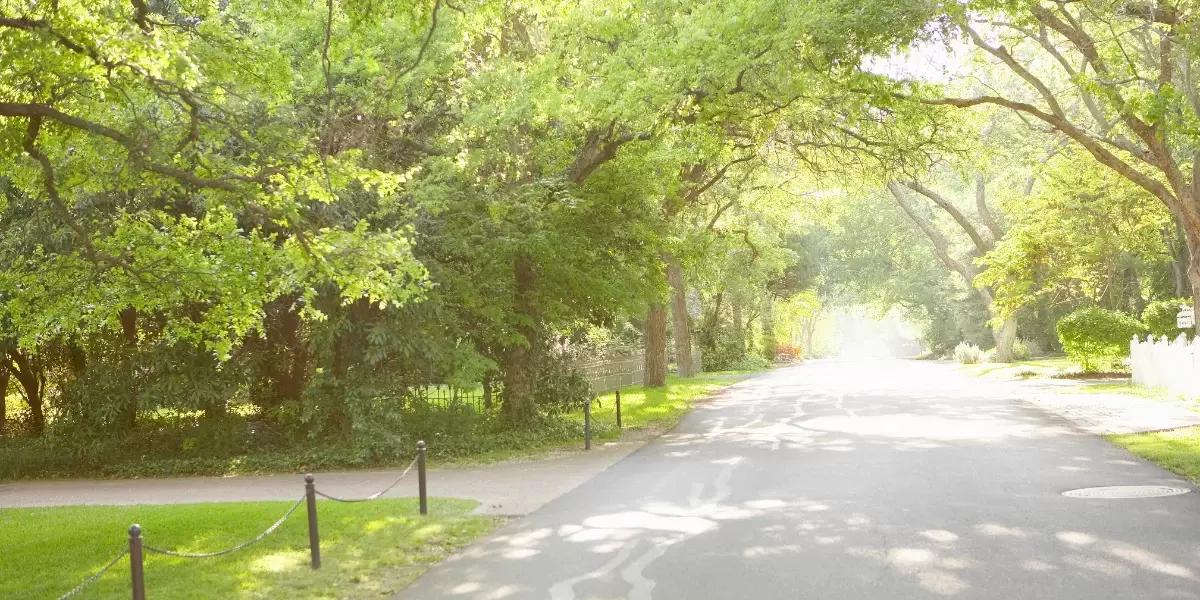
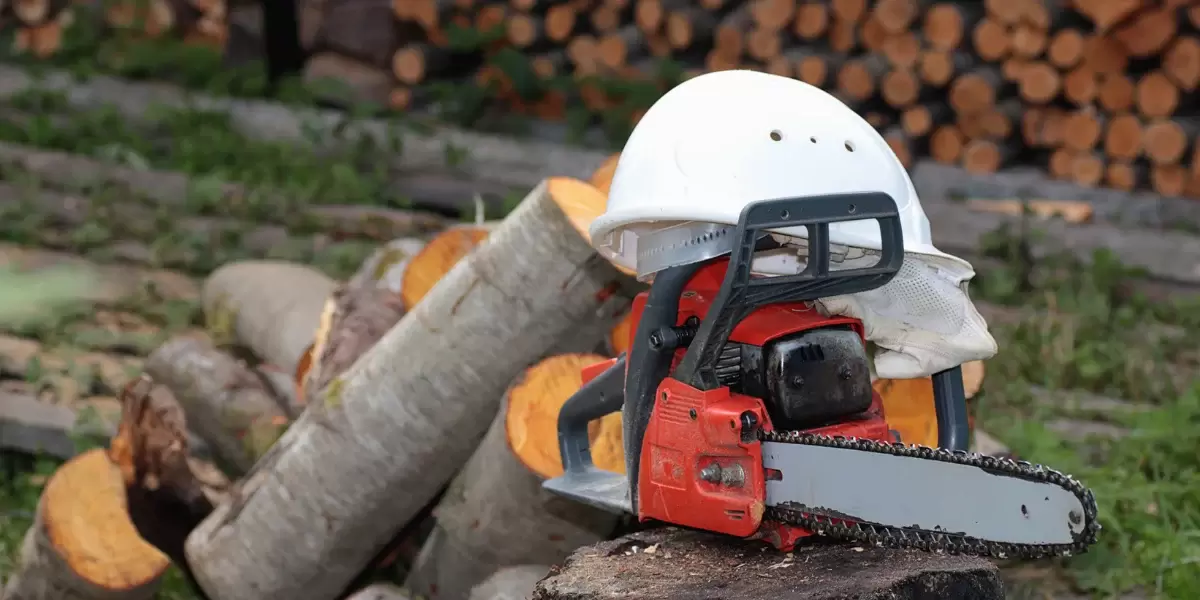
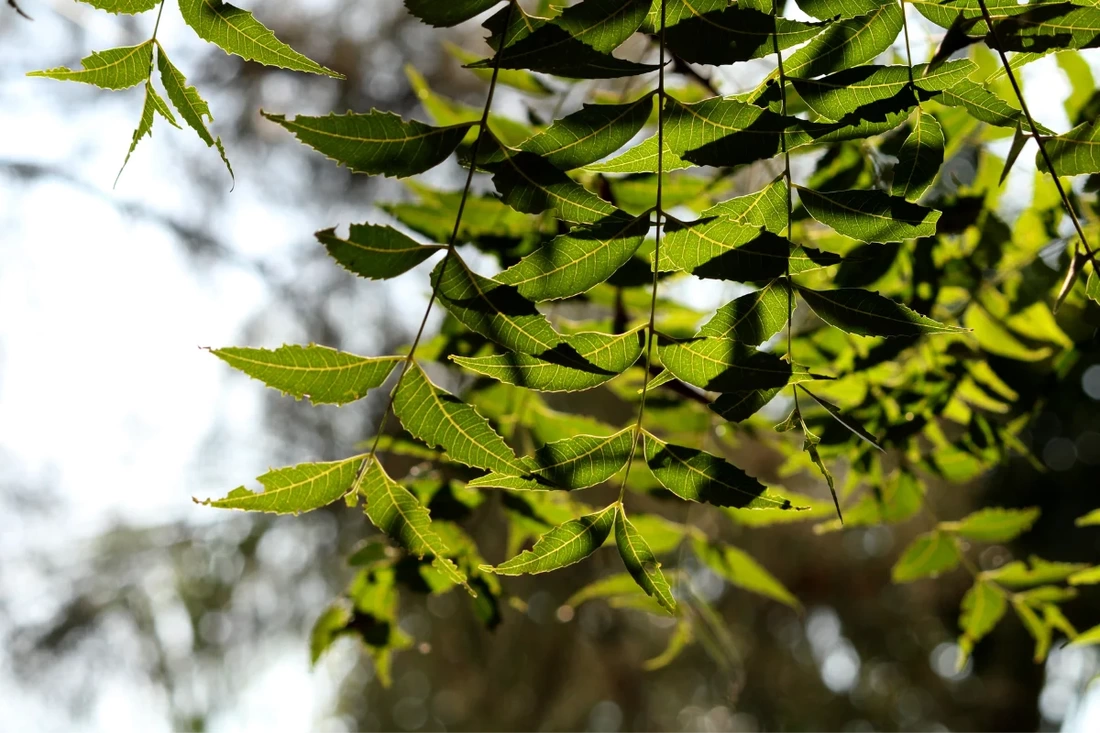
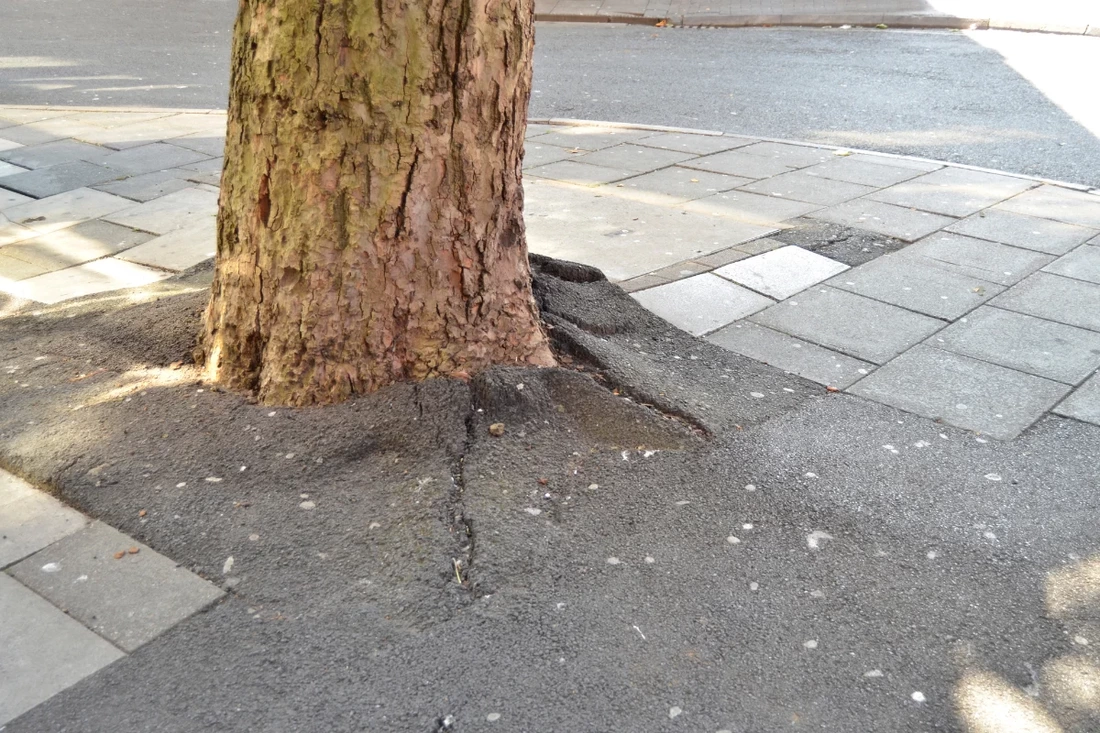
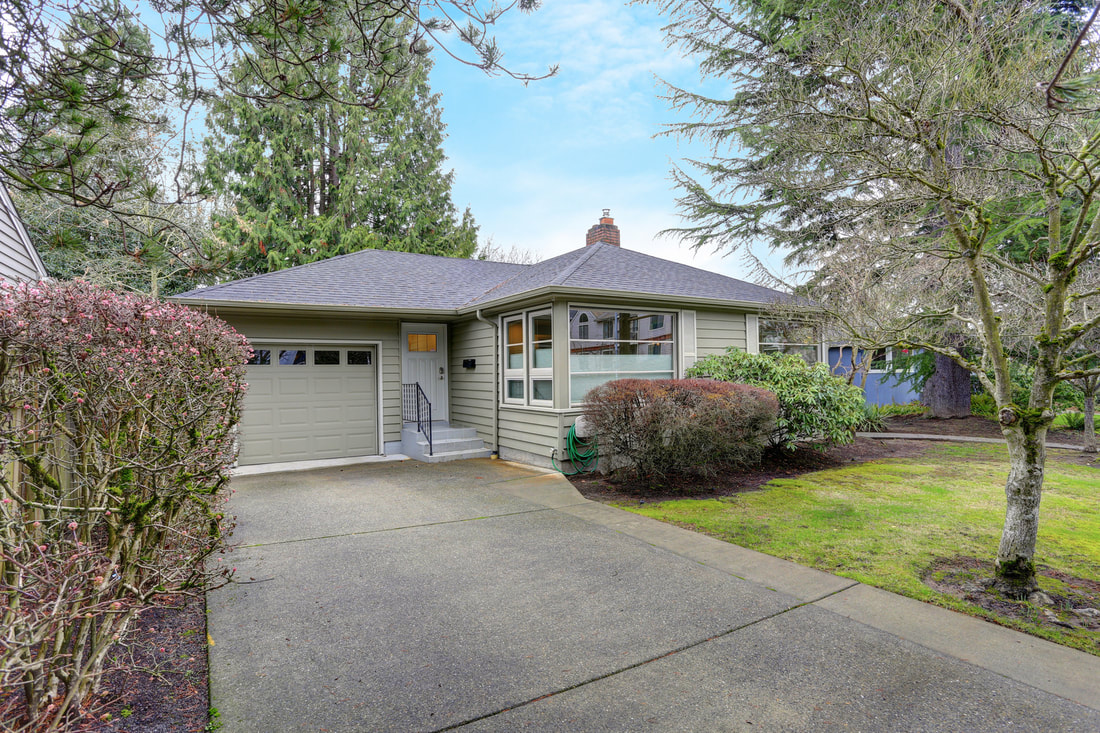
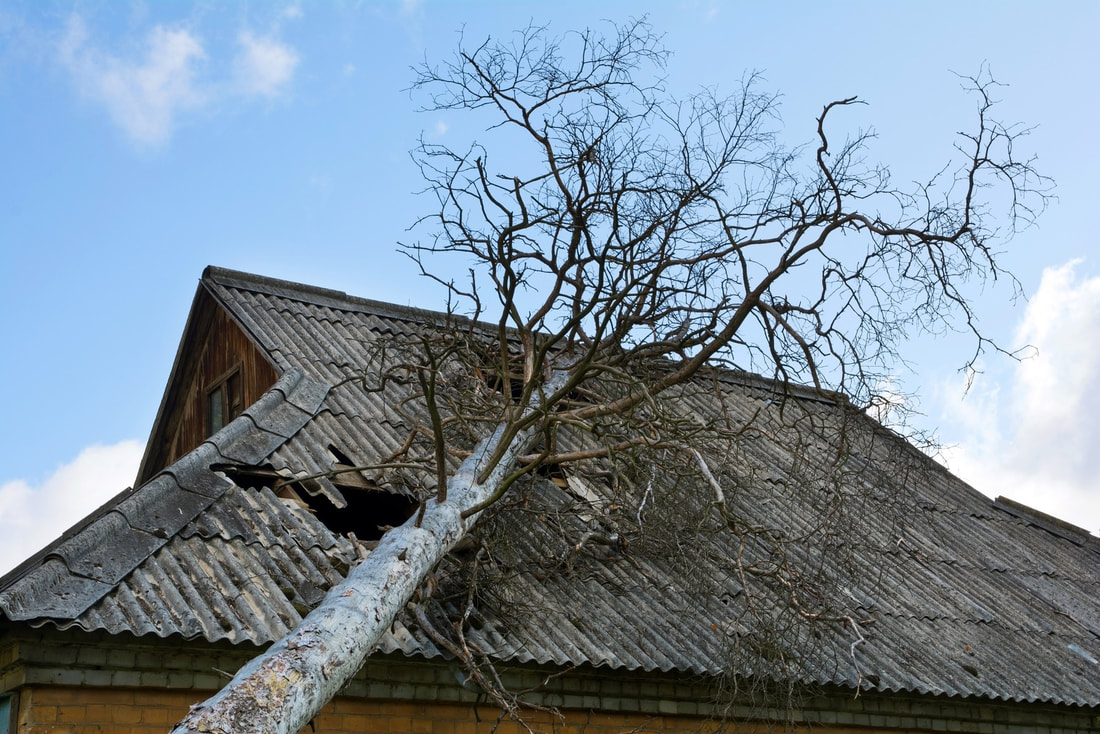
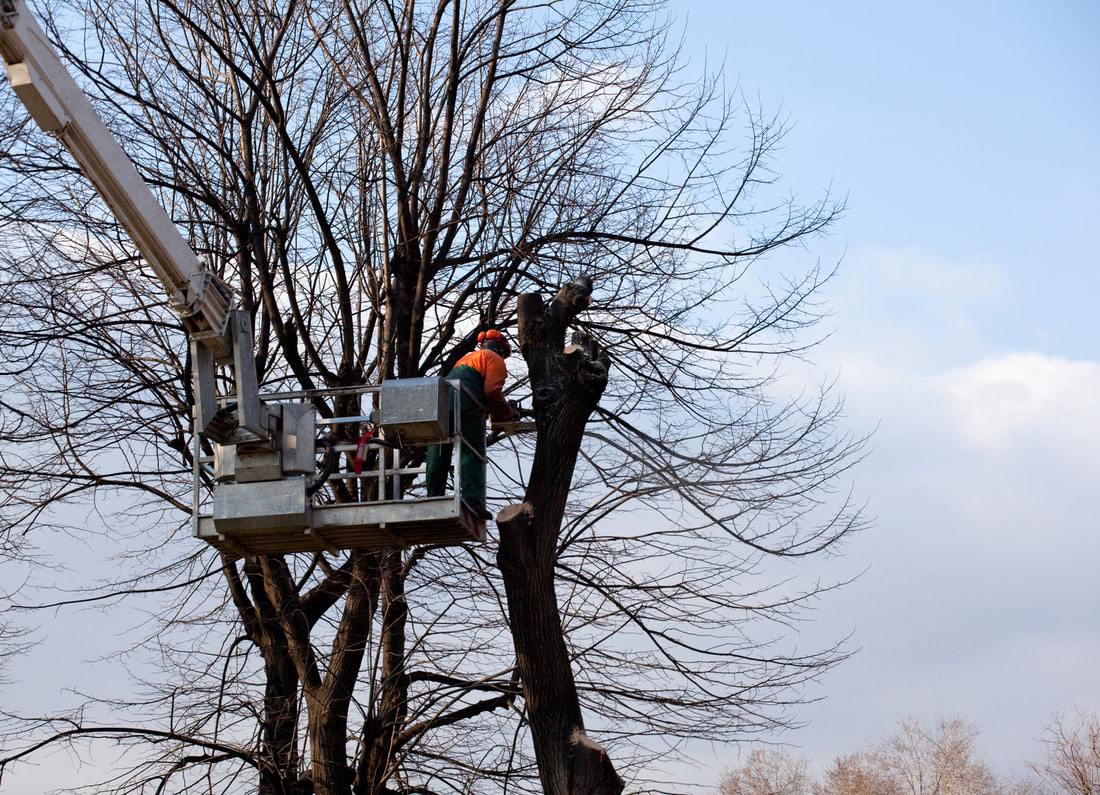
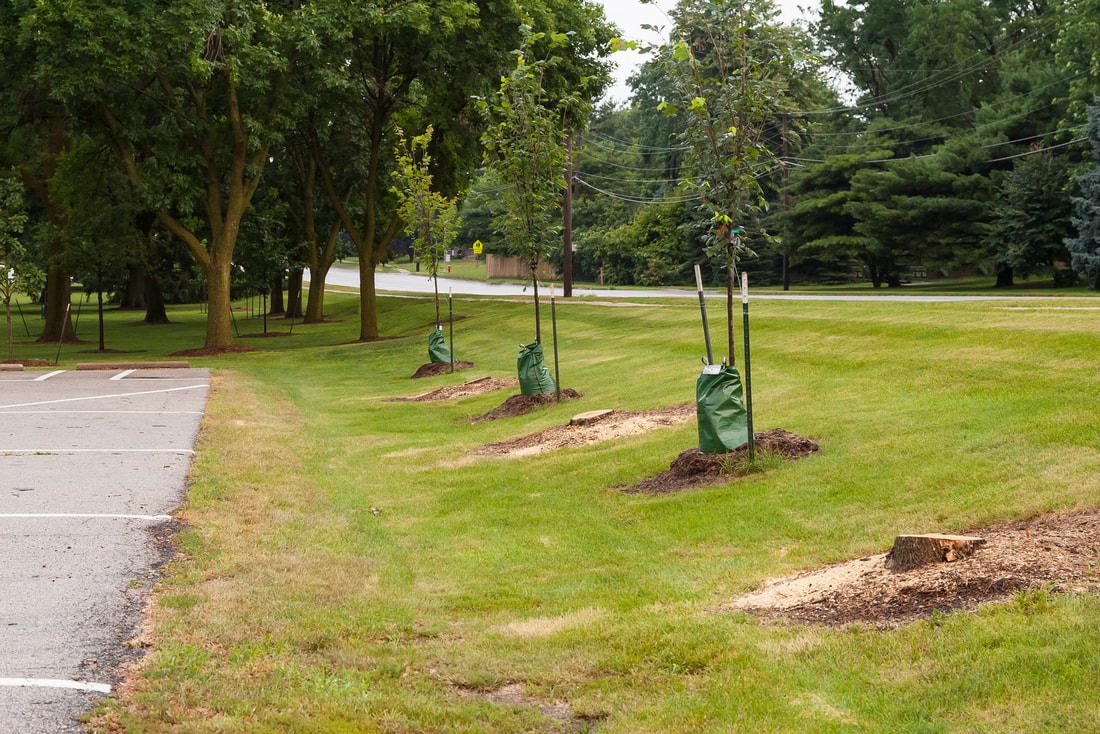
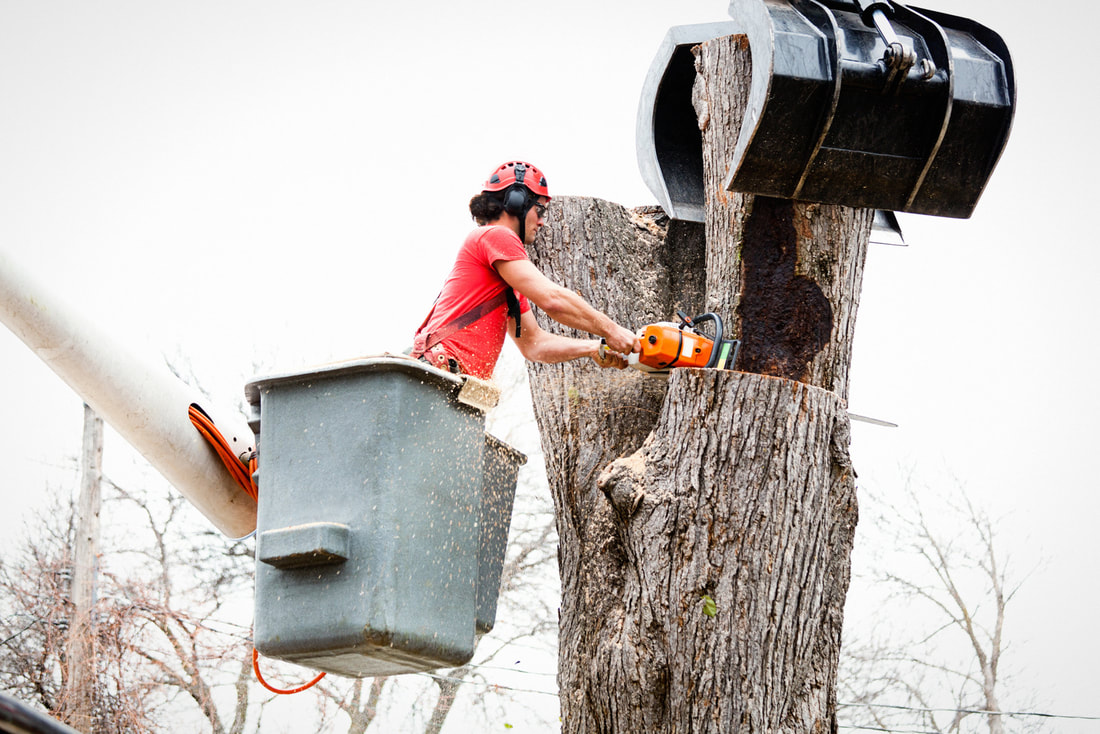
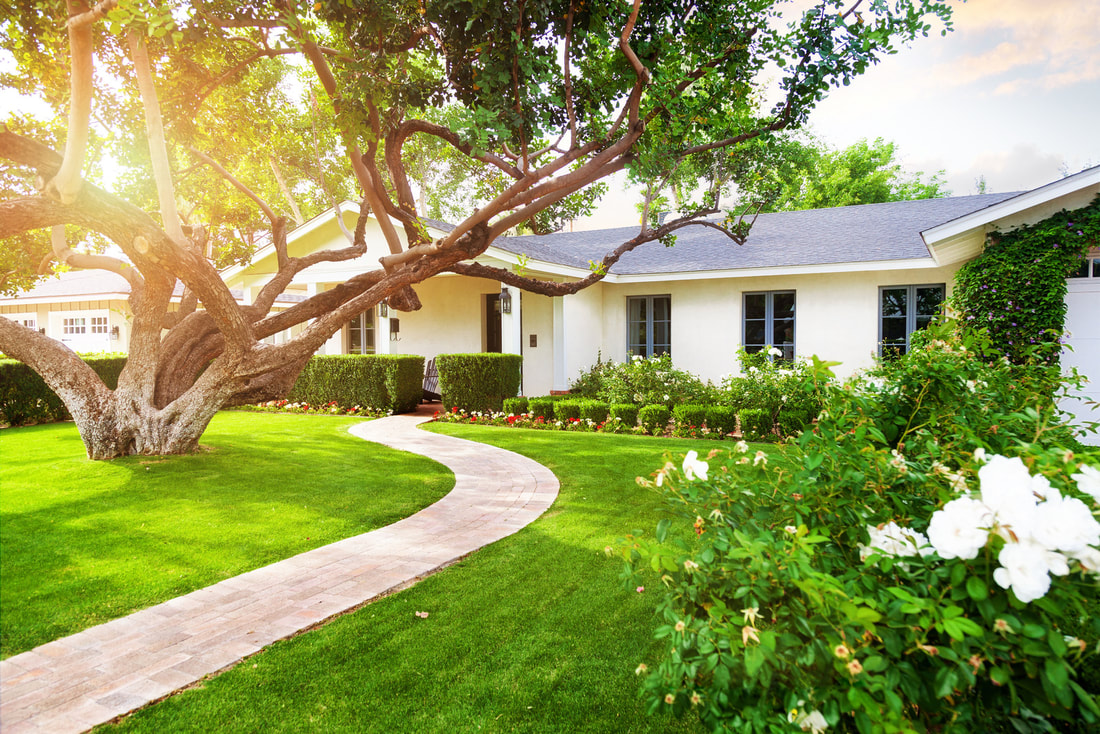
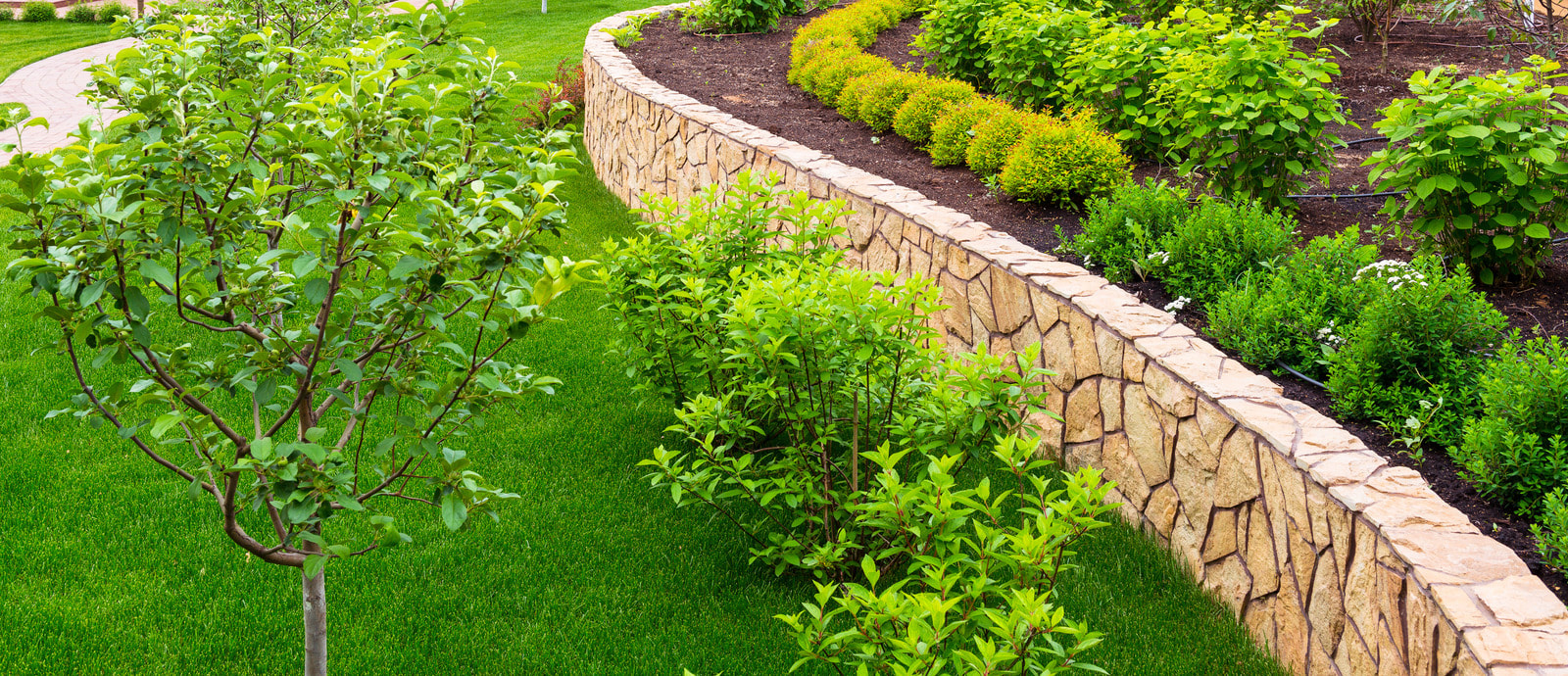
 RSS Feed
RSS Feed